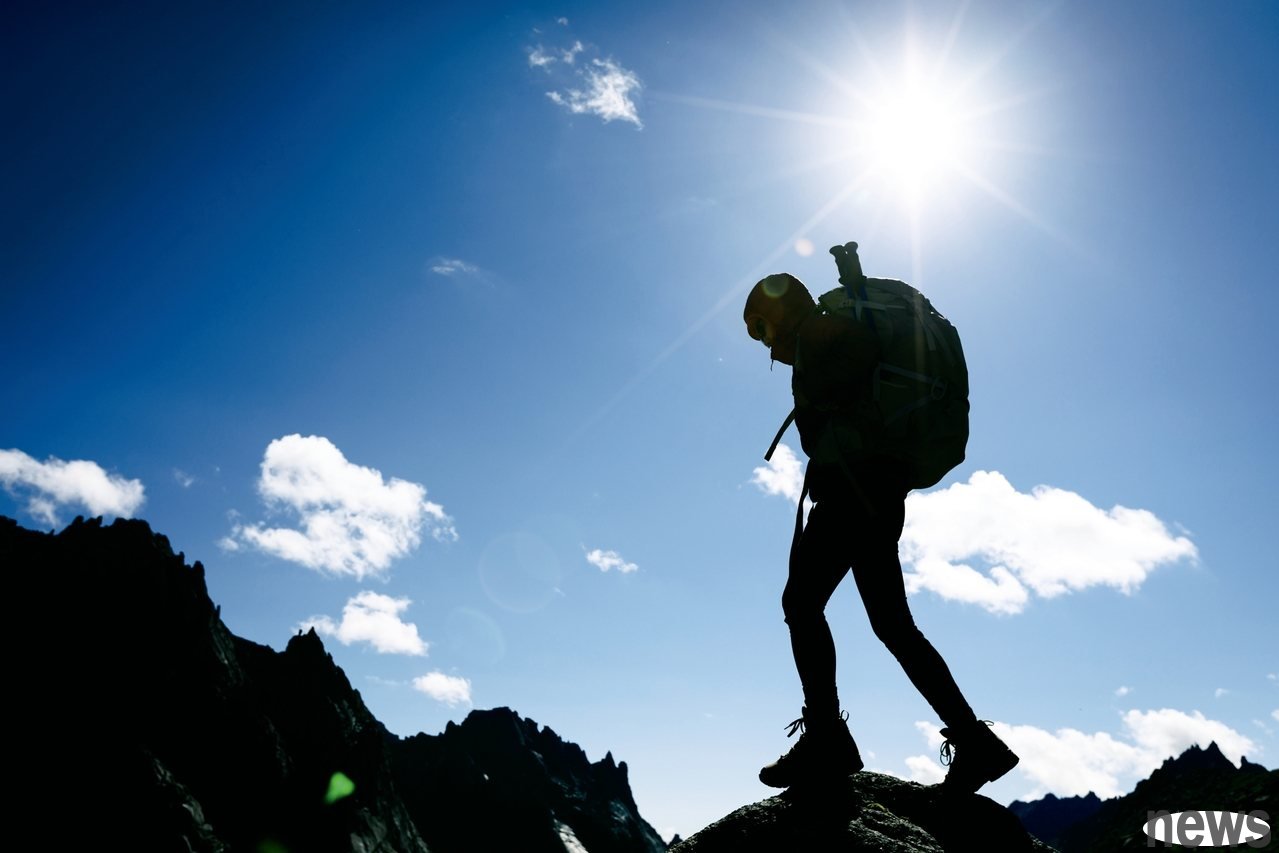
After retirement, a friend shouted that a couple carried their backpacks and went up the mountain to enjoy themselves! There are many mountains in the countryside, and mountaineering has become an indispensable leisure life for many silver hairdressers.
Some people say that climbing is the most difficult knee-breaking movement; some experts believe that climbing in the right posture and training will not accelerate the knee-breaking degeneration.
Can the silver hair tribe climb mountains? What kind of preparation should be done to make mountaineering a safe and exciting leisure activity.
"Compared to walking on the flat ground, climbing a mountain will have a greater damage to the knee, and when going down the mountain and down the stairs, the knee needs to bear four times the weight of the body." Dr. Hou Xianyang, director of orthopedics at the International Hospital of New International said that from the perspective of climbing the same mountain and the same route, obese people have more burdens than thin people, that is, people with heavier weight will have greater knee burden when climbing the mountain.
For the best you can, you don’t have to eat because of choking. However, the impact is not as if you climb one or two times, your knees will be damaged, so you should be as good as you can. To humans, knees are like wheels of cars, which will deteriorate after being worn for a long time. The knee structure, such as soft bones, is not as fragile as everyone imagines. It is actually very powerful, but it will still be worn out after being used over the years, inappropriately, and overused.Hou Xianyang said that mountain climbing exercises are more advantageous than disadvantages. As long as the knees are not problematic, hairdressers can still climb mountains without choking, but they must "do what they can."
Don't be too fast and too big.Commonly known as wrong mountaineering habits that hurt knees include:
1. Carrying too much luggage and not considering your own physical fitness.
2. The movement rhythm is too fast and the stroke is too large, so you want to walk vigorously.
3. Overuse of knees for a long time exceeds the range of personal abilities, for example, one attack or the total distance is too far, and there is no suitable rest.
Orthopedic doctors suggest that mountaineering should reduce the weight (personal weight and equipment weight), and match your ability and have a moderate stride. The pace should be stable. Once you step on the air or slippery road, it is easy to twist your ankle or fall and slip, causing your knees to be damaged. The stride should not be too large. If the stride span is too large, the more the knee penis is, the more stress the joint force of the bone and femur will be greater.
Sudden increase in mountain climbing, the most vulnerable to injuryWu Yicheng, a doctor at the Department of Sports Medicine at the New International Hospital, said that the common sports injuries in mountain climbing are musculoskeleton problems. The knee joints need to withstand torsion and pressure during climbing. Studies have shown that the knee joints bear 3 to 4 times the pressure when climbing downhills; when squatting, the pressure of the hair bone will increase to 8 times.
Doctor Wu Yicheng suggested that you should not suddenly increase the number of mountaineering. If there is any inappropriateness, it is the most important principle to avoid knee injuries and other mountaineering sports injuries, that is, prevention is focused on treatment. Wearing a hot body before climbing, wearing a knee protection or using a strait during climbing can protect the knee and reduce the chance of pain.
Can I climb a mountain?1. People with normal knee function
No problem with knees, and climbing will not accelerate the deterioration of the relationship. Many studies have pointed out that the more active people, compared with ordinary people who sit for a long time and don’t exercise, the less likely they are to degenerate, because stable lower limb muscle strength is an important factor in reducing degeneration.
2. Degenerative inflammation
Even if there is degenerative inflammation, you can still engage in mountaineering activities, but mountains with a relatively mild slope should be selected. Weekly and peaceful movements can increase muscle strength and effectively reduce the burden on the knee joint. When going downhill, you can't remember to move too fast. Hold your hiking pole in your hands and walk down the mountain slowly. If you just wear it slightly, you can give up your movement. It's a pity.
If the knee has degenerated to pain, you should first understand the situation with your doctor, then evaluate whether it is suitable for mountaineering sports, and choose suitable sports projects based on the principle of not adding pain.
3. If the back is light, the back does not affect the mountain climbing. You can start with a relatively flat mountain. If it affects the up and down view of the mountain, it is recommended to choose a mountain climbing route carefully.
4. Other knee foot problems
Those with cystolecular femoral syndrome, bursitis and knee tendonitis may develop inflammation due to the rapid downhill speed and insufficient muscle strength. In addition, those with low stability of the ankle joint are also prone to acute ankle joint torsion.
Flat feet and high arch problems will cause unsuitable or pain in the knees and spine in the long run. Whether it is walking or climbing, appropriate shoe pads and shoes should be selected to avoid long-term poor posture and reduce pain.
5. Obese people
Body body mass index BMI is greater than 25. People with excessive body mass have a higher chance of suffering from degenerative inflammation, and mountaineering causes greater burden on the knees. It is recommended to choose other sports types, strengthen muscles and reduce weight first, and then carry out mountaineering activities.
